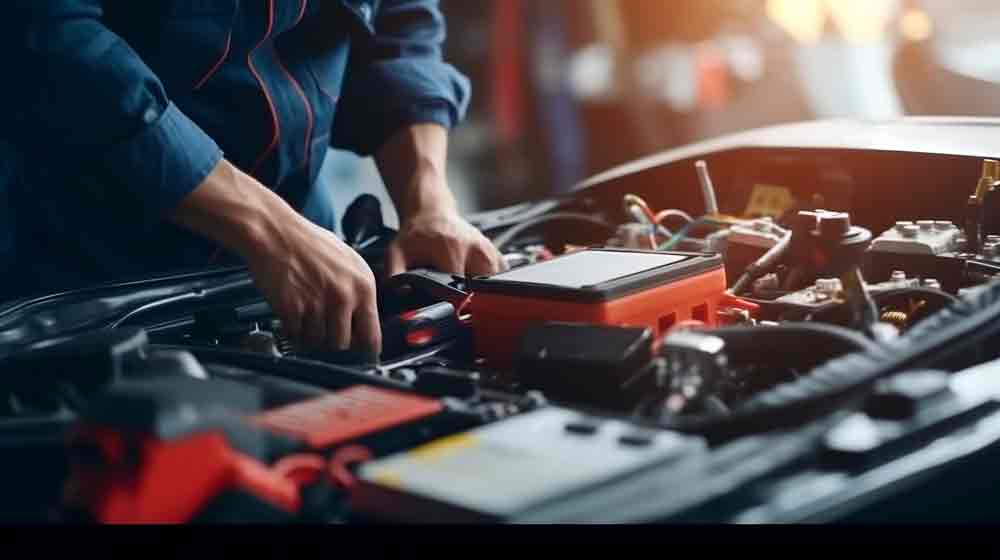
Reconditioning Lead-Acid Batteries for Enhanced Performance
Lead-acid batteries, ubiquitous in various applications from automotive to backup power systems, are susceptible to degradation over time. As the battery ages, its capacity diminishes, resulting in reduced performance and potentially premature failure. However, reconditioning these batteries can effectively rejuvenate their performance, extending their lifespan and offering significant cost savings.
This comprehensive guide delves into the intricacies of reconditioning lead-acid batteries, providing a detailed understanding of the process, its benefits, and the crucial steps involved.
Understanding Battery Degradation and Reconditioning
The primary reason for battery degradation is the formation of lead sulfate crystals on the battery plates, hindering the flow of electrical current. This process, known as sulfation, occurs naturally during battery discharge and recharge cycles. As the battery ages, these crystals become larger and harder, reducing the surface area available for chemical reactions.
Reconditioning essentially involves reversing this sulfation process. By applying specific techniques, we can break down these lead sulfate crystals and restore the battery's capacity.
Benefits of Reconditioning Lead-Acid Batteries
Reconditioning offers numerous advantages, including:
- Extended Battery Lifespan: Reconditioning can significantly extend the operational life of a battery, delaying the need for replacement.
- Improved Performance: Reconditioned batteries can regain a substantial portion of their original capacity, delivering enhanced performance.
- Cost Savings: The cost of reconditioning is significantly lower than purchasing a new battery, resulting in considerable financial savings.
- Reduced Environmental Impact: By extending the lifespan of existing batteries, reconditioning contributes to a more sustainable approach to battery management, reducing the need for new battery production.
The Reconditioning Process: A Step-by-Step Guide
Reconditioning involves a series of steps designed to break down sulfation and restore battery functionality. Here's a detailed breakdown of the process:
1. Battery Assessment and Preparation
The first step is a thorough assessment of the battery's condition. This involves checking:
- Voltage: Using a voltmeter, measure the battery's open-circuit voltage. A healthy battery should read around 12.6 volts.
- Specific Gravity: This measures the concentration of electrolyte within the battery. Use a hydrometer to measure specific gravity, which should be within the manufacturer's specified range.
- Visual Inspection: Look for any signs of damage, corrosion, or leaking electrolyte.
If the battery has visible damage or severe corrosion, it's best to discard it. For batteries with minor damage, a careful cleaning with baking soda and water can be beneficial.
2. Desulfation
Desulfation is the core of the reconditioning process. It involves applying
- Pulse Charging: This technique involves applying a series of short, high-current pulses to the battery. These pulses disrupt the crystal structure of lead sulfate, allowing it to dissolve.
- Equalization Charging: This method involves charging the battery at a high voltage and current for an extended period. This can be effective, but it can also generate excessive heat, so careful monitoring is essential.
- Desulfation Equipment: Specialized desulfation equipment is available that employs specific techniques to break down sulfation more effectively. These devices often use high-frequency pulses or other methods.
3. Battery Charging
After desulfation, the battery needs to be fully charged. This step replenishes the electrolyte and ensures optimal performance.
Use a dedicated battery charger that provides a constant current charging method, allowing the battery to reach full charge without overcharging.
4. Battery Testing and Validation
Once the battery is fully charged, it's essential to test its performance. This can be done by:
- Load Testing: Apply a specific load to the battery and measure its voltage and current output. This test assesses the battery's ability to deliver power under load.
- Capacity Testing: This measures the battery's ability to hold a charge. It involves discharging the battery at a specific rate and recording the time it takes to reach a certain voltage level.
Based on the test results, you can determine if the reconditioning process was successful. If the battery's performance meets your requirements, it's ready for use. If not, further desulfation or other interventions might be necessary.
Precautions and Safety Considerations
Reconditioning lead-acid batteries requires careful attention to safety. Here are some crucial precautions:
- Ventilation: Reconditioning processes often involve the release of hydrogen gas. Ensure proper ventilation during charging and desulfation to prevent accumulation of flammable gases.
- Eye and Skin Protection: Wear appropriate eye protection and gloves to avoid contact with battery acid. Battery acid is highly corrosive and can cause severe burns.
- Fire Prevention: Be cautious of potential sparks or heat generation during reconditioning. Keep fire extinguishers readily available.
- Proper Equipment: Use only battery chargers and desulfation equipment designed for lead-acid batteries. Improper equipment can damage the battery or pose safety hazards.
Conclusion
Reconditioning lead-acid batteries can be an effective way to extend their lifespan, improve their performance, and save money. By understanding the process, following the recommended steps, and prioritizing safety, you can successfully restore your batteries to a more functional state. However, it's important to acknowledge that not all batteries are suitable for reconditioning. Batteries with significant damage, severe sulfation, or other internal issues may not respond well to the process.
Ultimately, reconditioning offers a viable option for revitalizing lead-acid batteries, minimizing waste, and maximizing their utility.
0 comments:
Post a Comment
Note: Only a member of this blog may post a comment.